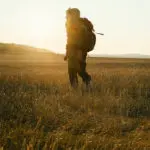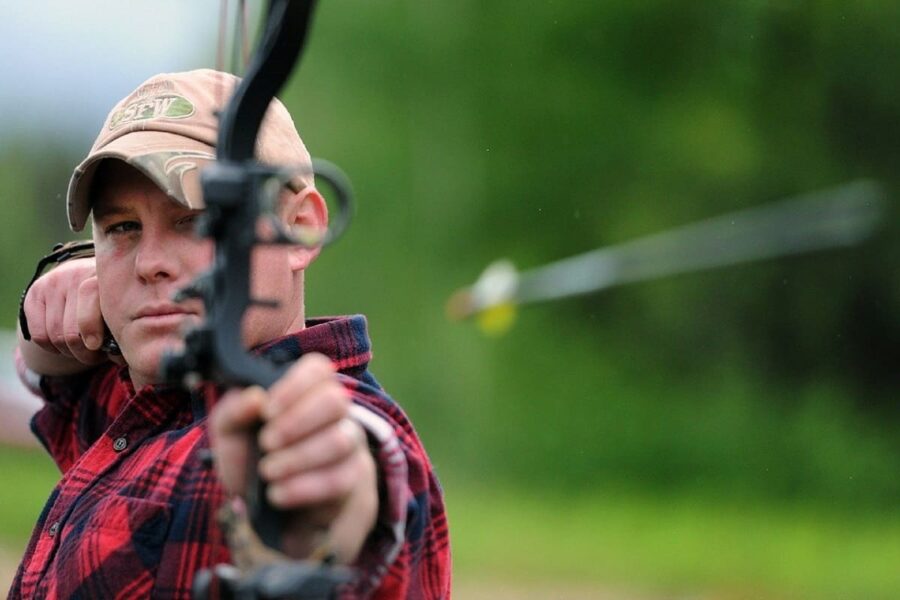These days, most hunters use firearms during their hunting affairs, but nothing beats tapping into our predecessor’s skills and using them.
So, in this article, we will look at a “buying guide” of features you’ll want to keep in mind when selecting a bow—and which don’t matter too much—and then we’ll examine some of the best models on the market right now.
1. Diamond Archery Edge 320
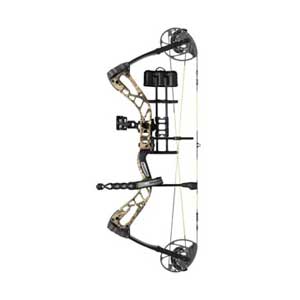
The Diamond Archery Edge 320 is undoubtedly one of the best hunting bows that not only Diamond Archery offers but the market overall. As you may have gotten by its name by now, it has an astonishing speed of 320 FPS, which is the best speed that money can get you.
The tool is a complicated beast with a Synchronized Binary Cams System that, while it needs some additional work to do its job at the best possible level, offers an immense return in the form of excellent speed and power, able to shoot and stop any type of game accurately, big or small.
In terms of raw characteristics, it is easily one of the best compound weapons on the market right now. With an excellent draw length adjustable to kids and adults alike, ranging from 15 inches to 3 inches, and the same goes for the draw weight, which can be cranked from the measly 7 pounds to the staggering 70 pounds.
With a brace height of seven and a quarter inches, plus an effective let-off of 85 percent, you can make not only powerful but easy shots.
Suffice it to say with all those amazing features and characteristics, you have one hell of a bow on your hands, and while it has a high price, it can back it up with quality craftsmanship and a one-year warranty. This is, without a doubt, the best weapon for the price.
2. Bear Archery Pledge
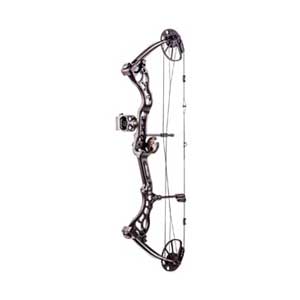
Here we have one amazing offering from Bear, a compound bow that offers fast, precise, and powerful shots that carry an amazing amount of accuracy, so you are looking at your own amazing archer’s tool with all the accessories and technology you can expect at this price.
Bear Archery Pledge has a dual cam and a machined aluminum riser, so combined with the 21 to 30 inches draw length and 40 to 70 pounds range of draw weight, you have very adjustable and flexible characteristics to your bow, this making an excellent tool for both big and small game. The bow’s brace height I also perfect, clocking at around 7 inches square.
The whisker biscuit arrow rest and the 3-pin sight give a large bump in accuracy and stability, allowing you to make even more price shots without that much moving around, risking to scare off your prey.
While the weapon overall doesn’t offer the greatest characteristics on the market right now, it lacks in neither quality nor reliability, so for the price, it’s an excellent addition to any archer’s arsenal.
3. Leader Accessories
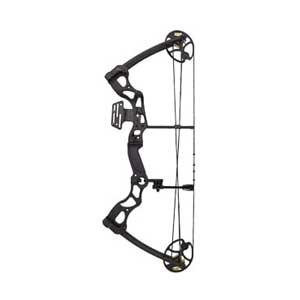
As you may have gotten it by the name, Leader Accessories are really one of the leaders when it comes to archery equipment and technology. The bow also comes with many accessories, ranging from e 3 pin sight to a fabric release, to a fabric sight, and a drop away arrow rest.
Though the draw weights and draw lengths ranges aren’t industry leaders, with a draw weight of 30 to 55 pounds and a draw length of 19 to 29 inches, the weapon makes up for that with a significantly lighter body, clocking in at only 3.3 pounds. Its maximum speed, which is around 300 FPS, is as good as it’s let off, 70 percent.
The ATA, Axle-to-Axle ratio, is also very good, with a whopping 28 inches and an amazing brace height of 7 inches.
Overall, being in the middle of the range characteristics combined with its affordable price makes it a good choice for anyone who still wants power and speed without forking a large sum of money.
4. RAPTOR Compound Hunting
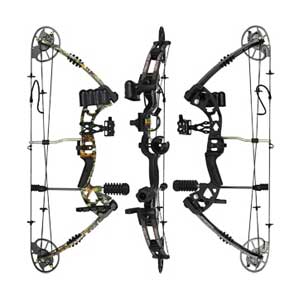
Here we have an amazing offering from Raptor, an excellent bow combined with all the top-notch accessories you may need, giving fast shots that carry all the speed, power, and accuracy you may want from a hunting weapon.
Locally made, this piece of equipment offers fully machined aluminum limbs, risers, and cams, making it not only more rigid than some plastic offerings from other companies but also lighter, with the whole assembly adding up to only 3.6 pounds.
It has a class-leading speed of 315 FPS, and with an ATA length of just thirty inches, it is perfectly proportioned for anyone to use. The draw weights and draw lengths are adjustable, and the range is nothing to scoff at, with a maximum setting of 70 pounds of draw weight and 31 inches of draw length, resulting in one very cohesive experience with powerful shots that carry a ton of accuracy.
RAPTOR Compound Hunting also packs an amazing set of high-quality accessories, ranging from a 5-pin sight with light and level and biscuit-style rest to a stabilizer, 4 arrow quiver, and string stop. The peep sight and d-loop come pre-installed.
Suffice it to say, if you want a do-it-all weapon that will give you the ultimate archery experience with all the modern technology that you may want, don’t hesitate to choose this model. And you will be supporting local manufacturers if you are interested in this.
5. SAS Feud – Travel Package
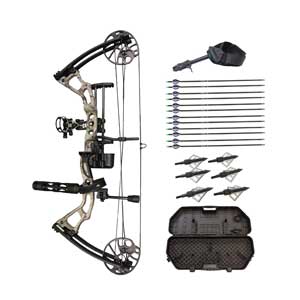
The last offering in our list sure isn’t the last bow when it comes to fast shots that carry a lot of speed and accuracy because, like many other outdoor activities products, SAS really know what they are doing.
This particular model of the SAS Feud Compound Bow is called the Travel Package, and it comes with a high-quality travel case with all the accessories you may need if you are a hunter who is going to be traveling across the country.
It is an excellent overall option for anyone looking for a tool with enough versatility for any situation you may encounter.
With great specifications, dual reinforced cams, amazing, fast shots that carry immense speed and accuracy, a huge let-off of 80 percent, and an ATA (axle-to-axle) ratio of 30 inches, you will have one amazing experience with this local craftsmanship piece of hunting equipment.
How to Select the Right Deer Hunting Bow for You?

If you’re new to bowhunting, here are the factors you’ll want to consider when selecting a weapon for deer hunting. We’ll start with the first and perhaps most important question, should you choose a recurve or a compound style of a weapon for hunting?
While in this article, we will be looking at the compound style, it won’t hurt to know what are the pros and cons of both recurve and compound ones.
Should I Choose Recurve Or Compound Bow?
Choosing a recurve or a compound bow is your first choice when selecting a bow to hunt deer with.
Generally speaking, more hunters use the compound one to hunt game, and that’s probably a good thing: they’re easier to draw, easier to aim, and a lot more powerful than the recurve. For all those reasons, if you’re new to hunting and looking for archery equipment, we’d suggest you start with a compound weapon instead of a recurve.
If you are going to choose a recurve, though, you’ll have fewer features to consider – they are far simpler than the compound ones. If you’ve got a well-made, quality product, the only features you need to think about are the draw weight (in most states, you’ll need a weapon with a draw weight of 40 pounds or more to hunt game) and a bow sight (and many folks who use a recurve to hunt usually embrace traditional hunting, and forego a bow sight altogether).
A high-quality weapon with a draw weight of 40 pounds or more and a bow sight (or not!) is all you need to hunt deer with a recurve – but again, if you’re just starting, we’d urge you to use the compound alternative to hunt, because they’re easier for new hunters to use. You’re more likely to put down an animal rather than just wounding it.
What Is The Best Length Of Draw?
I highly recommend getting fitted at a pro shop for any bow you want to buy or even try to shoot. Draw length is probably the most important aspect and setup you need to shoot correctly. It does not only create consistency, but it also greatly reduces injuries like slapping your forearm with the string to hurting your shoulder if pulling the cord back too far.
Some modern compound archery weapons can adjust the draw length fifteen to twenty inches right there in your living room. Others require different cams or machines to change the draw length.
Any pro-staff can easily figure out your draw length with you there in their shop. But here’s a simple technique for you:
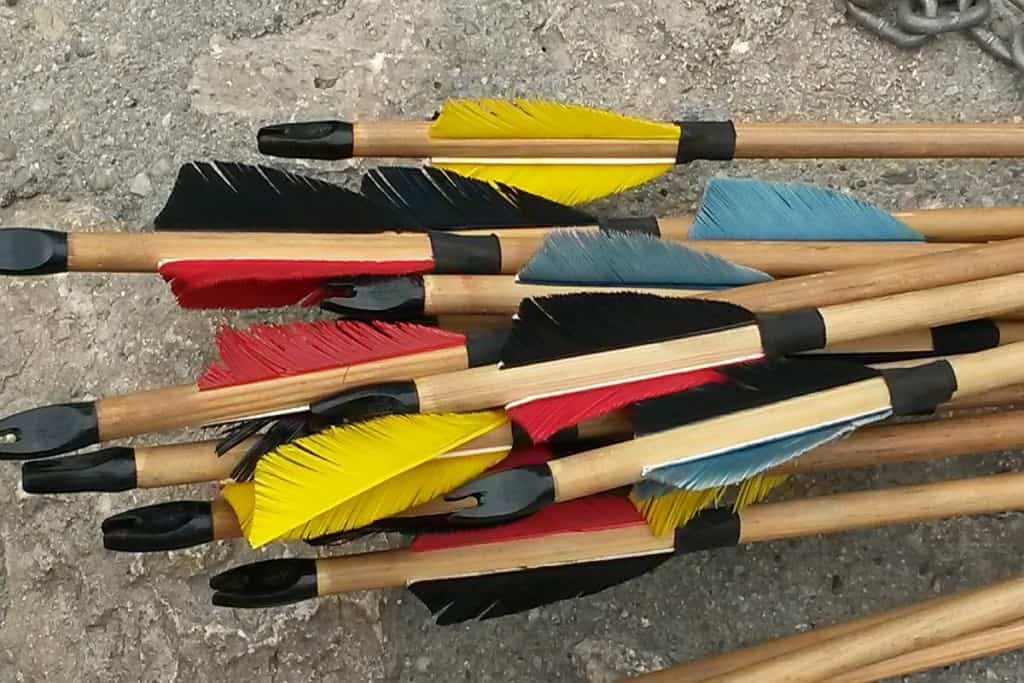
What Is Draw Weight?
Understand that not all weapons are versatile when it comes to poundage. Many of them are designed with a 10-pound adjustment window.
For example, you can purchase a bow with the lowest weight setting at 50 pounds and the max that it can be set to be 60. These may require different cams or limbs to withstand the new weight. Then some of them can be set from 13 to 70 lbs.
What Is Bow Weight?
Again, the weight is dependent on your purpose. If your goal is recreation or target practice, you can use a heavier one and set it down between shots.
If it is for hunting, it is important to note that you will carry your hunting gear, arrows, and everything else for as long as you are out there. It can be quite exhausting to carry your gear and to hold your weapon up or even at full draw for certain lengths of time.
Now, when a manufacturer advertises the weight of their bow, remember that they are referring to the dry weight. You still have to account for the weight from the sights, arrows plus broadheads, rest, and quiver. So you need to search for both machined aluminum riser and limbs for optimal weight and rigidity.
Helpful Tips
Just a small tip if you plan on hunting, it is suggested to practice shooting your bow with a quiver full of arrows and anything else you might have on you when trying to harvest an animal.
Understandably, the amount of weight that the quiver full of arrows is very minimal. But when crunch time comes, muscle memory is all you will have to do as you draw and release your shot.
The weight of the quiver on the side of your bow may not throw you off when shooting something like 30 or 40 yards. But if you are trying to reach out to 60 yards, it may affect you more than you think.
Purpose
If you are going to hunt, some corners cannot be cut. Or if you are going into competitive shooting, then you might want the top of the line for the opportunity of the perfect shots that are fast and able to carry the full amount of speed through the whole shot.
Low-cost but cheaply manufactured weapons tend to malfunction, so sacrificing certain things result in shots with much less accuracy and speed.
Looking at the top-of-the-line weapon, you are guaranteed quality, which may even surpass the shooter themselves if being shot with poor form. For these ones, you must be willing to drop close to or over $1,000 for the barebow.
Then there are great pieces with good quality that the shooter could match and others you can surpass. Poundage is one thing that many hunters and shooters can surpass, so that needs to be accounted for and thought of for future use.

Frequently Asked Questions
Why Are Silenced Parts So Important?
Deers are easily scared creatures and quick ones too. They’re light on their feet, and if they hear a sound they don’t like, they bound away instantly. That’s true for mule deer out west, but it’s especially true for white-tail deer out east. The first time you see it, you’ll be amazed—they’ve got great hearing, and they’re quick.
So, the sound that your weapon makes is important. Luckily, this is one of those features that manufacturers have worked on over the last decade or two—probably because deer hunters kept telling them, “—and most high-end hunting bows we will be looking at do have silenced Parts as main Features.
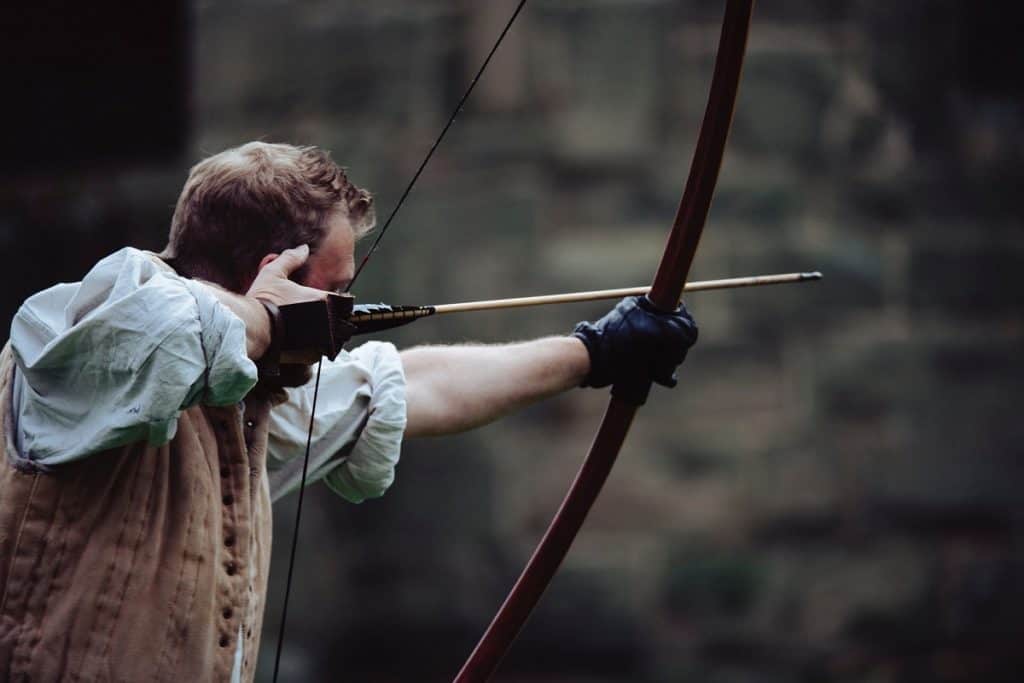
Keep in mind that not one is totally soundless, and there will always be some noise when you release your drawstring and let an arrow fly. That said, the only time your bow may make a very loud “twang,” or “thwack” sound is if it is improperly tuned (and your local archery shop or range can help you with that) or if there’s a problem with your draw.
One good workaround is a string silencer, which can gobble up a lot of the vibration from your string and dramatically quiet things down.
Bows are much quieter than they used to be, but higher-end bows are usually quietest; if you’re having noise problems, a sound dampener may do the trick.
How to Choose A Draw Length?
Knowing your draw lengths will narrow your options and make everything less overwhelming. This is done differently, but it measures your wingspan or one arm up to a certain point.
It gives a great guideline for setting up a bow with what should be comfortable. If you have too long draw lengths, then you will be pulling the highest poundage a lot further back into your draw, and it will cause other inconsistencies.
A shorter draw length is also hard and requires you to bend your elbow or not get the weapon back to anchor spots against your face.
What Is Feet Per Second (FPS)?
Over the last decade or so, you might have noticed that each one of the big bow manufacturers has been knocking themselves out to make their weapons faster. There are a couple of reasons for that. Still, the simplest explanation is that an arrow that travels faster will make an impact sooner, and when you’re dealing with deer—a species of animal that gets spooked very easily—you want every advantage you can get. The quicker your arrow can connect, the more likely you will harvest that deer.
Most compound bows have an FPS range of around 270 FPS on the lower side to about 330+ FPS on the higher side. You might imagine the FPS is vitally important, but…
But here’s what most people forget: most hunting is done with 30 yards of your game. At that range, your arrow will arrive at the animal very quickly, and the difference in time between a 270 FPS and a 330 FPS isn’t going to make much difference.
If, however, you’re accustomed to taking long shots—that is, 30 yards or more—then FPS becomes incredibly important because your arrows are going to take a much longer time to reach the deer, and a higher FPS will help you. If you’re within that 30-yards-or-less range, FPS becomes a little less important.
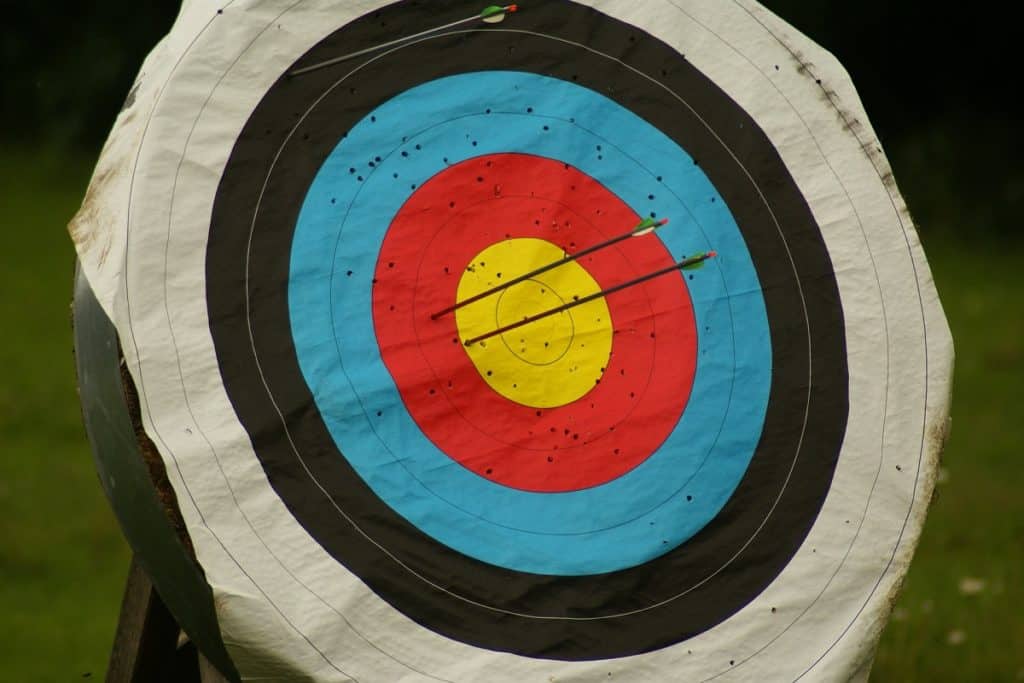
What Are The Sights Used For?
The sights on your bow allow you to pinpoint how high to hold your bow, depending on how many yards you are from your target. It is usually attached to the middle of the riser and is light enough not to change the riser’s balance.
For many, they would have a pin set at 20 yards, the next would be at 30 yards, and so on in increments of 10 yards. With the modern advancement in bows, understandably, accuracy has progressed in leaps and bounds. Sights are one of these progressions.
What Are The Different Types Of Sights?
It seems there are more options with different sights than there are with bows. From floating pins to 7-pin setups, the options are limitless.
If your weapon of choice doesn’t come with a sight, you need to understand the area and style you will be hunting. Tree stand, still hunting, ground blind, spot and stalk. Each sight has a benefit for those different styles of hunting.
7-pin sights are ideal for spot and stock or still hunting. This allows you to approach an animal or jump one and quickly find the pin depending on the distance.
The floating pin or single adjustable pin is perfect for ground blinds or tree stands where you can adjust the sight to where the animal may be standing. The new advancement has also opened the door for sights such as 5 or 7-pin fixed, with the bottom pin being a floater. This allows the shooter to dial in the distance much farther than some believe ethical.
Some avid hunters will practice a far shot, such as 80 yards. Not to hunt at that distance, but it allows them to fix flaws with forms since mistakes are drastically noticeable.
Then when they move up to a closer distance, they are more consistent and make fewer mistakes with their form.
Remember that you must be extremely confident at any distance to make an ethical shot, and you should only hunt within your confidence range.
A good bow sight is important, and for close-range hunting, a 3-pin sight is usually fine; for longer-range shooting, a 5-pin sight is usually a better idea. Also, remember—if you find the one you like but don’t like the sight, you can usually replace it with one that you like more.
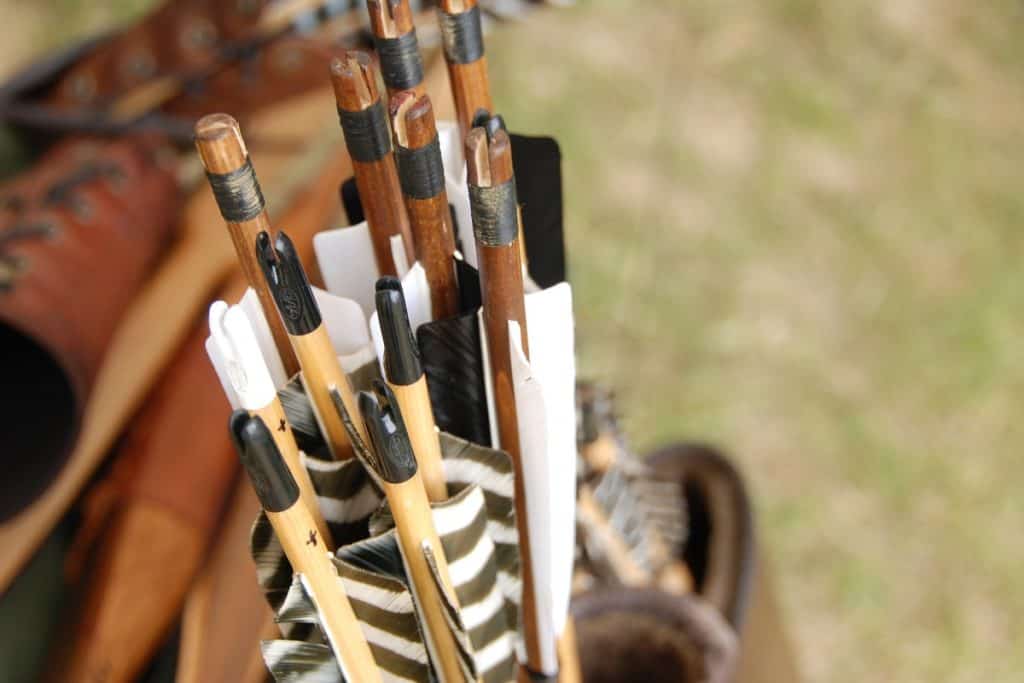
What Is The Optimal Axle-to-Axle Length?
For a long time, the manufacturers insisted that if you wanted to go hunting, you wanted a shorter bow—one that had a small axle-to-axle measurement. The thinking made sense: shorter axle-to-axle lengths usually shoot faster arrows, and they’re easier to lug through during a hunt (and that can be a huge benefit if you’re spot-and-stalk hunting and doing a fair amount of walking).
The trade-off, though, is that bows with a shorter axle-to-axle length aren’t as accurate as the longer alternatives. That’s why target archers in competitions tend to have enormously long weapons—they’re easier to hold in a single position, and they can prove to be a little more accurate.
So, the length isn’t the most important thing in the world, and if you’re fairly new to bowhunting deer, it might make sense to get a slightly longer one because it can provide added stability and aim. If you’re a pro and your marksmanship is on point, a shorter weapon with a shorter axle-to-axle length can be a good choice because it can offer a lot of speed.
If you’re an inexperienced archer, a shorter axle-to-axle length may be challenging, and a mid-length alternative can be a good bet; if you’re an experienced archer, the shorter weapon can provide some extra speed.
What Is “Rest”?
Rest is an attachment on the bow that holds the arrow consistently in the same place and at the same angle every time as you draw back and shoot.
Back in the day, the shooter would hold the arrow in place as they drew back to keep it from falling off.
Rests have followed the technology with the sights, from drop away or whisker biscuits to mechanical rests, all the different styles are available. With the new styles, each one is effective, so it comes down to preference.
What Is “Whisker Biscuit”?
The whisker biscuit is a bunch of bristles that hold your arrow in place but also allow the fletchings on the arrow to slip through the bristles.
What Is “Drop Away”?
The Drop away will hold your arrow up, and when you release the string, the stand will drop, and the arrow will float and shoot forward.
As with anything mechanical, it can always malfunction, many people will steer clear of them because of the risks that they have. With any malfunction, it can cause the arrow to shoot off to one side or even injure the shooter, among other results.
It all depends on who you talk to and what their preference is, and the stories they have heard. I have personally shot both, and both did the trick.
What Are The Release Aids?
Even though it isn’t part of the weapon itself or attached to it, a good release aid can work wonders in grouping from consistency to perfect shot placements. A good release helps you draw the bow in comfort while waiting at the full draw if need be.
What Are The Main Release Aid Styles?
There are a few different styles. Some strap around your wrist and others are hand-held. Many of them are adjustable to different lengths, which matter to get consistent anchor points due to more consistency.
A cheap release aid can have a stiff trigger, which can cause flinching when trying to shoot at an animal during that adrenaline rush. The trigger shouldn’t be choppy at all, and it should be a smooth process.
Hook calipers and double calipers are just a couple of options for release aids. Some argue that the double-moving caliper is the way to go as the string won’t slip off the release, and it will slide out smoothly seems that both jaws are moving simultaneously.
Should I Test The Release Aid First?
Like purchasing a bow, the way to find out what release style you want is to test drive as many as possible. Any pro shop or big-name outdoor store will have numerous release aids that customers can try until they find the exact one they want.
Some vary in size, length, and style, so you might end up buying one and then, with more experience, look into a different style.
What Are The Price to Quality Ratios?
Price and quality are what the majority of people initially look at and want to know when purchasing gear. You first need to understand what you plan to do with your bow.
If you are an adult, you can just buy one weapon to last the rest of your life, depending on the quality and money you invested in it. For those that are just going to shoot occasionally, there is less need for a top-of-the-line item.

What Are Poundage and Let-Off?
Pay Attention to These
This may be the most important feature, and we’ve saved it for last: the draw weight of the bow and the let-off.
In most states, your weapon must meet or exceed a minimum draw weight for you to hunt the game. That makes sense if you think about it because if the draw weight is too low, your arrows won’t travel with enough force to properly penetrate the game and put it down humanely.
Your bow needs to be strong enough to shoot arrows that will penetrate, and usually, for deer hunting, the minimum draw weight that states require is 40 pounds (although you’ll need to check with your state to make sure).
So, here’s what we’d advise: if you’re a new hunting enthusiast, a weapon with adjustable draw weight can be a great feature. You can practice on lower draw weights, gain skill and musculature, and then move up to higher draw weights that’ll send your arrows flying at higher speeds and with more kinetic energy.
If you’re a pro, and you’ve been shooting for several years, and you know exactly what your draw weight is—and your draw weight meets your state’s minimum requirement for the game that you’ll be hunting—then it can make sense to buy an item with the set draw weight.
The let-off, too, is important. When you pull the string of your compound weapon all the way back, you’ll feel the draw weight suddenly decreases. That decrease is called let-off, and it’s usually measured at a percentage. If you were pulling a 100-pound compound weapon that had 80% let-off, when you’re at full draw, the draw weight you will feel would be 20 pounds (100-pound bow —> minus 80% —> 20-pound draw weight).
That’s an important feature when you’re hunting because you see a deer and pull the string back, you might need to wait a little while until you get a clear shot. Having a significant let-off can be a great thing to have, particularly if you’re shooting a high-poundage bow.
Most compound alternatives provide significant let-off and should suit most hunters; if you’re shooting a weapon with very high draw weight, a high let-off percentage is an important factor.
Final Words
Choosing a compound bow isn’t an easy task, for sure. With all kinds of different draw weights and draw heights, different limbs and riser materials, axle-to-axle ratios, variable speed, brace height, and accuracy, you have so many factors you can choose from that getting the right combination of them won’t be that easy of a process.
But the best hunting compound weapon isn’t the most expensive and feature-rich model, it’s the most silent, light, and easy-to-use model because the first rule of hunting is to be silent and maneuverable, so even though some models have the best FPS and let off, they weigh so much that they are only good for sports archery.
Suffice it to say, choosing the best one isn’t easy, nor is it a hard process, because when you do begin to understand the different factors like speed, brace height and draw lengths range, then you will know how much of them you will need. To find the bow that has the best base components, like a machined aluminum riser and limbs, and build the other parts of the tool while looking for the best craftsmanship.
